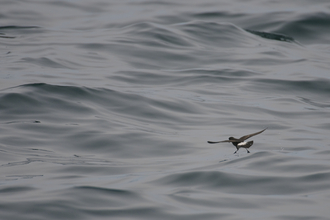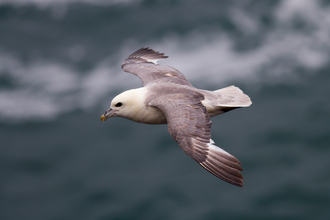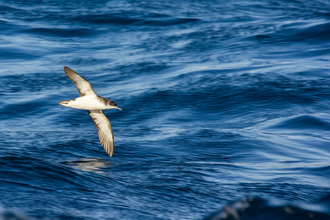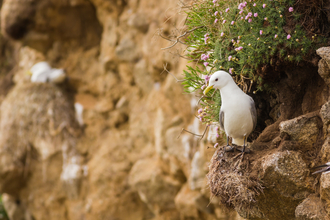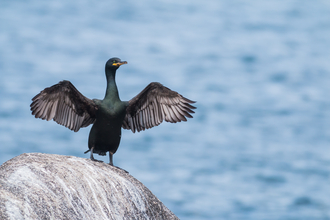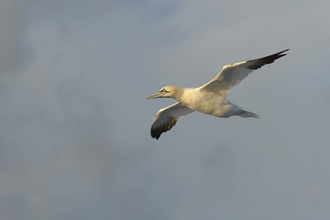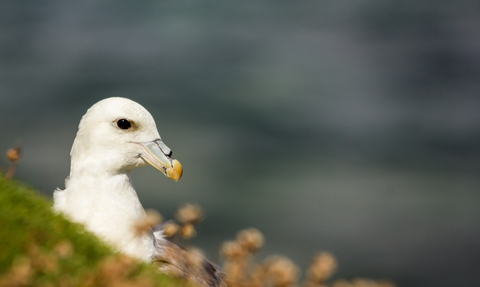
Fulmar
Cliff-dwellers
Cruising low over calm water, the fulmar is gull-like seabird part of a group known as tubenoses, closely related to storm petrels and the ginormous albatross. Though they share many characteristics with a gull, their wings are straighter, and they fly with stiff, shallow wingbeats, gliding and banking along the jagged coastline.
The flight behaviour of a fulmar is one of their most recognisable features. Their wings are a pale, stormy grey and their underbellies are pure white, allowing them to camouflage against the sky. Fulmars have yellow beaks tinged with grey and thick-set necks. You will catch flashes of white and grey as they swoop and pivot in the air.
Fulmars nest in the cliffs and will often fly up and along the cliff faces, riding the updraughts. On Scilly, the main cliff-side sub-colonies are located on Menawethan and the Daymark. The number of breeding pairs has remained fairly consistent over the past decade, however fledging success has been variable in the last few years, which may explain the lack of growth for Scilly’s population.
Like the albatross, Fulmars have a built-in defense mechanism that allows them to spit foul-smelling oil at intruders, which will stick to a bird’s wings, matting their plumage and making them unable to fly. The oil is produced in the fulmar’s stomach and is also used as an energy-rich food source for young chicks. This behaviour of spraying liquid contributed to their common name, which comes from the Old Norse Fúlmár, meaning ‘foul gull.’
Fulmars will feed in flocks out at sea, catching fish, small squid, shrimp, crustaceans, marine worms, even scavenging for fish waste and carrion. These birds have adapted a way to manage the large amount of seawater they consume whilst feeding, possessing a special gland above their eyes which excretes the salt travelling through their bloodstream. In the 1800s, fulmars only nested in one or two places on islands in the far north of Scotland.
Find out more
The Isles of Scilly are famed for their amazing marine life. Find out more about fulmars nationally and other seabirds you can find on Scilly...

